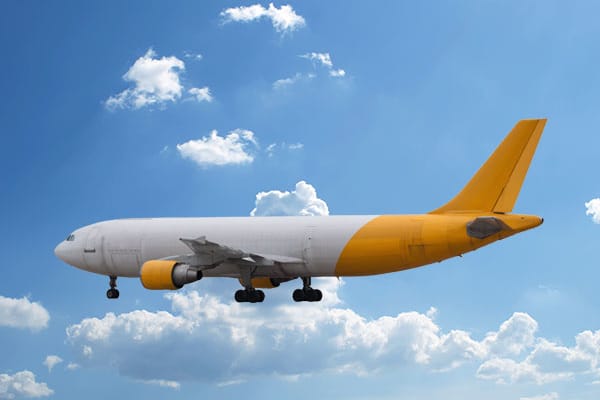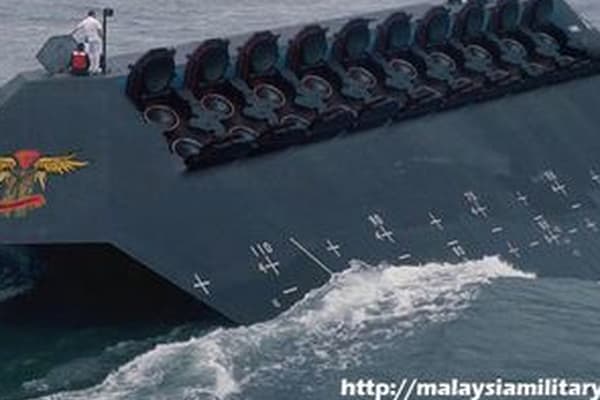SEOUL: The
intercontinental ballistic missile North Korea launched this week+
was a new type of missile bigger and more powerful than any the country had tested before, South Korean officials said on Thursday.
Photos from the North's official Korean Central News Agency are providing valuable clues about the capabilities of the missile, named the Hwasong-15. North Korea said it carried a "super-large heavy warhead which is capable of striking the whole mainland of the US+ ."
North Korea's Hwasong series+ represents the most successful and formidable part of its ballistic missile arsenal, and photographs of the test suggested improvements over the Hwasong-14, a missile first tested over the summer that showed the country's capacity to strike the continental United States.
"We believe this is a new type of missile," said Roh Jae-cheon, a spokesman for the South Korean military's Joint Chiefs of Staff. "It looks clearly different from the Hwasong-14 in the external looks of its nose cone, the linkage between its first and second stages, and its overall size."
South Korean officials said the launch suggested that North Korea's missile program was advancing faster than previously believed.
Private analysts agreed that the Hwasong-15 looked bigger and more powerful than the Hwasong-14.
Kim Dong-yub, a defense analyst at the Seoul-based Institute for Far Eastern Studies, said North Korea appeared to have built the Hwasong-15 by upgrading the second stage of the Hwasong-14, which carries the missile through space after the first-stage booster drops off.
Kim also reported an important discovery: He said the Hwasong-15 appeared to have two engines for its first booster stage, giving the new missile greater range than previous models.
Tal Inbar, head of space research at Israel's Fisher Institute for Air and Space Strategic Studies, agreed in a message on Twitter.
Kim said, "This is indeed a new type of missile."
He said that if the missile's first stage was in fact powered by two engines instead of one, it would dispel earlier speculation among some analysts that North Korea might have loaded a very light mock warhead on the Hwasong-15 so it could fly farther.
Chang Young-keun, a missile expert at Korea Aerospace University near Seoul, also said two Hwasong-14 booster engines were bundled together to propel the Hwasong-15, giving it the true range of an ICBM. North Korean engineers may also have helped the Hwasong-15 fly farther by fitting its thicker second stage with more fuel or more thrusters, which are secondary rocket engines commonly used for adjustments and velocity of a missile, he said.
The new missile's size and heft have required North Korea to build a bigger transporter-launcher vehicle. The new vehicle featured 9 axles, compared with the 8-axle truck used to carry the Hwasong-14.
South Korean defense officials say North Korea runs more than 160 mobile missile launching vehicles and is building more. Such vehicles make it easier to hide and transport missiles and harder for the United States and its allies to track signs of imminent missile attacks.
North Korea claims to be able to launch its missiles from anywhere, anytime. As if to drive its point home, each of the three ICBMs North Korea has launched so far was fired from a different location.
The photos also revealed that the Hwasong-15 has a rounder nose cone than the Hwasong-14. In Russian and US ICBM designs, such nose cones often mean that the missiles carry multiple warheads, analysts said. But they doubted that North Korea had the ability to hit an intercontinental target with a warhead yet, much less deliver multiple warheads on the same missile.
Michael Elleman, a missile expert at the International Institute for Strategic Studies in Washington, drew similar conclusions in his analysis of the photos and video released by North Korea. In a report published Thursday, Elleman said his "initial calculations indicate the new missile could deliver a moderately sized nuclear weapon to any city on the US mainland."
But he also said the North Koreans would need to conduct additional tests to establish the Hwasong-15's reliability. And like other aerospace experts, Elleman pointed out that North Korea had yet to show it had mastered technology to ensure a missile warhead survives the rigors of violent re-entry into the Earth's atmosphere.
Still, he said, "if low confidence in the missile's reliability is acceptable, two or three test firings over the next four to six months may be all that is required before Kim Jong Un declares the Hwasong-15 combat ready."
During a phone conversation with President Donald Trump on Thursday, President Moon Jae-in of South Korea said that the Hwasong-15 was "the most advanced North Korean missile yet, in all aspects," according to his office.
But he said it had not proved that North Korea has accomplished re-entry technology, or an ability to guide the warhead to its target.
The two presidents reaffirmed their determination to maximize sanctions to stop North Korea from further advancing its technologies and to pressure it to return to nuclear disarmament talks, Moon's office said.
Other pictures showed North Korea's leader, Kim Jong Un, celebrating the launch with his key missile scientists, Jang Chang Ha and Jon Il Ho. Both Jang and Jon are important players in North Korea's efforts to build a nuclear-tipped intercontinental ballistic missile.
Kim was also accompanied by Jo Yong Won and Yu Jin, top officials from the Munitions Industry Department of his Workers' Party. The party agency oversees the country's weapons development.
When the department submitted a plan for this week's test of the Hwsong-15, Kim approved it with his characteristic handwriting: "For the party and for the fatherland, launch the missile bravely!"
Photos from the North's official Korean Central News Agency are providing valuable clues about the capabilities of the missile, named the Hwasong-15. North Korea said it carried a "super-large heavy warhead which is capable of striking the whole mainland of the US+ ."
North Korea's Hwasong series+ represents the most successful and formidable part of its ballistic missile arsenal, and photographs of the test suggested improvements over the Hwasong-14, a missile first tested over the summer that showed the country's capacity to strike the continental United States.
"We believe this is a new type of missile," said Roh Jae-cheon, a spokesman for the South Korean military's Joint Chiefs of Staff. "It looks clearly different from the Hwasong-14 in the external looks of its nose cone, the linkage between its first and second stages, and its overall size."
South Korean officials said the launch suggested that North Korea's missile program was advancing faster than previously believed.
Private analysts agreed that the Hwasong-15 looked bigger and more powerful than the Hwasong-14.
Kim Dong-yub, a defense analyst at the Seoul-based Institute for Far Eastern Studies, said North Korea appeared to have built the Hwasong-15 by upgrading the second stage of the Hwasong-14, which carries the missile through space after the first-stage booster drops off.
Kim also reported an important discovery: He said the Hwasong-15 appeared to have two engines for its first booster stage, giving the new missile greater range than previous models.
Tal Inbar, head of space research at Israel's Fisher Institute for Air and Space Strategic Studies, agreed in a message on Twitter.
Kim said, "This is indeed a new type of missile."
He said that if the missile's first stage was in fact powered by two engines instead of one, it would dispel earlier speculation among some analysts that North Korea might have loaded a very light mock warhead on the Hwasong-15 so it could fly farther.
Chang Young-keun, a missile expert at Korea Aerospace University near Seoul, also said two Hwasong-14 booster engines were bundled together to propel the Hwasong-15, giving it the true range of an ICBM. North Korean engineers may also have helped the Hwasong-15 fly farther by fitting its thicker second stage with more fuel or more thrusters, which are secondary rocket engines commonly used for adjustments and velocity of a missile, he said.
The new missile's size and heft have required North Korea to build a bigger transporter-launcher vehicle. The new vehicle featured 9 axles, compared with the 8-axle truck used to carry the Hwasong-14.
South Korean defense officials say North Korea runs more than 160 mobile missile launching vehicles and is building more. Such vehicles make it easier to hide and transport missiles and harder for the United States and its allies to track signs of imminent missile attacks.
North Korea claims to be able to launch its missiles from anywhere, anytime. As if to drive its point home, each of the three ICBMs North Korea has launched so far was fired from a different location.
The photos also revealed that the Hwasong-15 has a rounder nose cone than the Hwasong-14. In Russian and US ICBM designs, such nose cones often mean that the missiles carry multiple warheads, analysts said. But they doubted that North Korea had the ability to hit an intercontinental target with a warhead yet, much less deliver multiple warheads on the same missile.
Michael Elleman, a missile expert at the International Institute for Strategic Studies in Washington, drew similar conclusions in his analysis of the photos and video released by North Korea. In a report published Thursday, Elleman said his "initial calculations indicate the new missile could deliver a moderately sized nuclear weapon to any city on the US mainland."
But he also said the North Koreans would need to conduct additional tests to establish the Hwasong-15's reliability. And like other aerospace experts, Elleman pointed out that North Korea had yet to show it had mastered technology to ensure a missile warhead survives the rigors of violent re-entry into the Earth's atmosphere.
Still, he said, "if low confidence in the missile's reliability is acceptable, two or three test firings over the next four to six months may be all that is required before Kim Jong Un declares the Hwasong-15 combat ready."
During a phone conversation with President Donald Trump on Thursday, President Moon Jae-in of South Korea said that the Hwasong-15 was "the most advanced North Korean missile yet, in all aspects," according to his office.
But he said it had not proved that North Korea has accomplished re-entry technology, or an ability to guide the warhead to its target.
The two presidents reaffirmed their determination to maximize sanctions to stop North Korea from further advancing its technologies and to pressure it to return to nuclear disarmament talks, Moon's office said.
Other pictures showed North Korea's leader, Kim Jong Un, celebrating the launch with his key missile scientists, Jang Chang Ha and Jon Il Ho. Both Jang and Jon are important players in North Korea's efforts to build a nuclear-tipped intercontinental ballistic missile.
Kim was also accompanied by Jo Yong Won and Yu Jin, top officials from the Munitions Industry Department of his Workers' Party. The party agency oversees the country's weapons development.
When the department submitted a plan for this week's test of the Hwsong-15, Kim approved it with his characteristic handwriting: "For the party and for the fatherland, launch the missile bravely!"
Get latest news & live updates on the go on your pc with News App. Download The Times of India news app for your device.
















